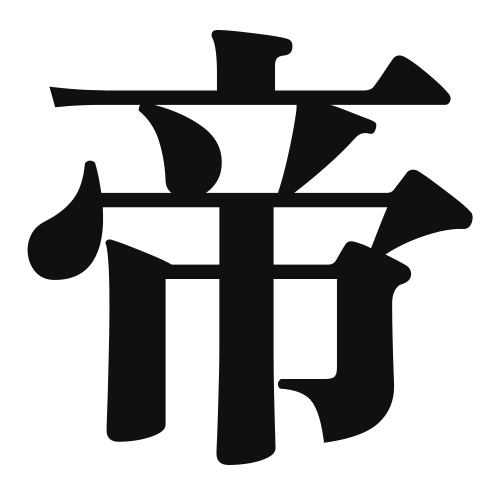1. Overview of Meaning
The kanji “帝” (tei) means “emperor” or “sovereign.” It represents a figure of authority and leadership, often associated with imperial rule and governance.
2. Formation and Radical
Formation of the Kanji: The kanji “帝” is a phonetic-ideographic character (形声文字). It combines the radical for “king” (王) with a phonetic component that suggests its pronunciation.
Radical: The radical of “帝” is 王, which means “king” and is commonly associated with royalty and authority.
3. Examples of Usage
Common Words and Phrases: Some frequently used words that include “帝” are “天帝” (ten-tei, meaning “heavenly emperor”) and “皇帝” (kōtei, meaning “emperor”).
Example Sentences in Daily Conversation:
- 彼は日本の歴史における偉大な帝の一人です。 (He is one of the great emperors in Japanese history.)
- 天帝の意志を尊重することが大切です。 (It is important to respect the will of the heavenly emperor.)
4. Synonyms and Antonyms
Similar Kanji: A similar kanji is “王” (ō), which means “king.” While both represent authority, “帝” specifically refers to an emperor, often with a divine or higher status than a king.
Opposite Kanji: An antonym could be “民” (min), meaning “people” or “citizens,” which represents the common populace as opposed to the ruling class.
5. Cultural and Historical Background
Relation to Japanese Culture: The concept of “帝” is deeply rooted in Japanese history, particularly in the context of the imperial family and the role of the emperor in Shinto beliefs.
Proverbs and Idioms: One relevant proverb is “帝王学” (teiōgaku), which refers to the study of governance and leadership, emphasizing the importance of wisdom and virtue in ruling.
